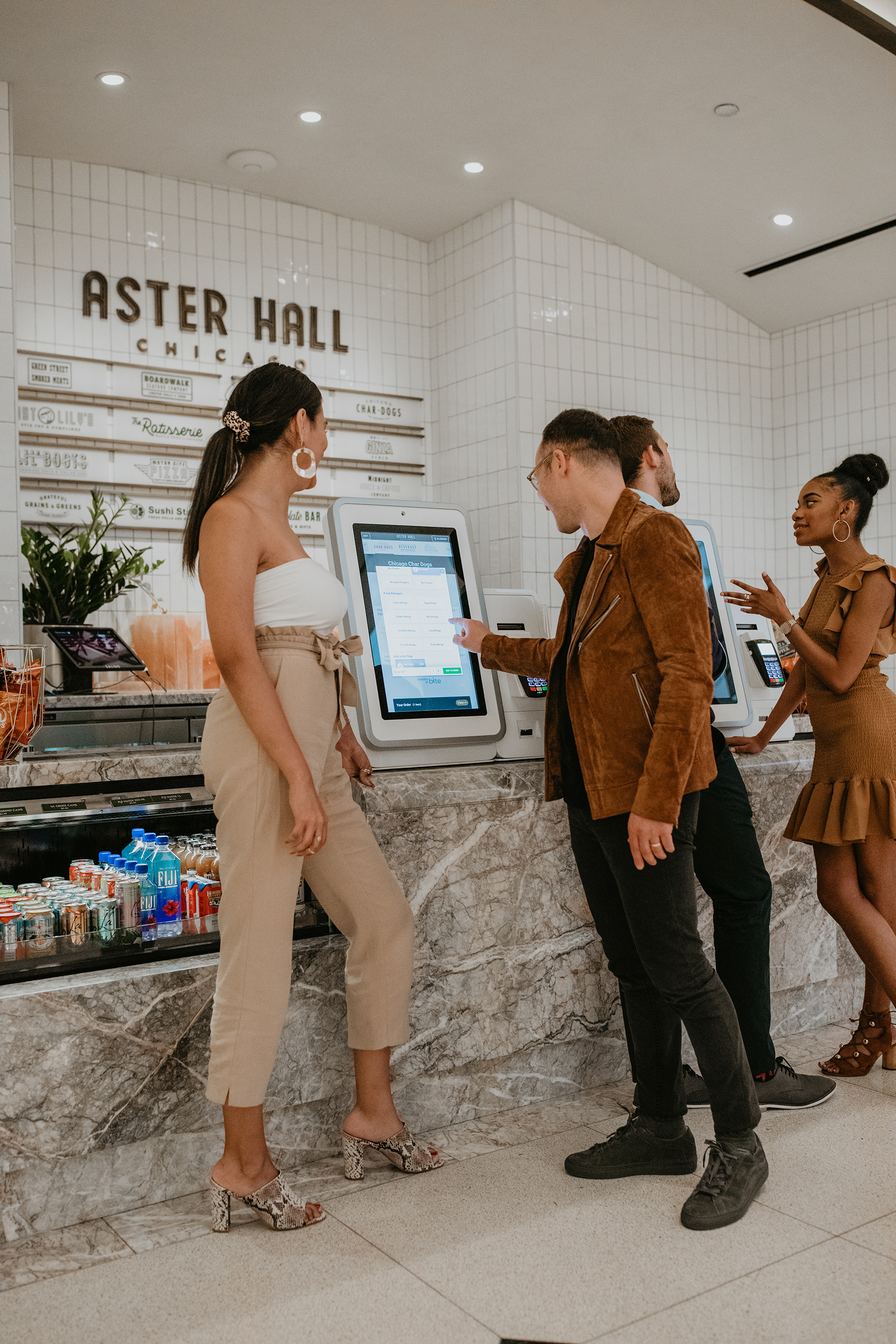When JMB Realty approached restaurant group Hogsalt Hospitality about operating a new food hall at its swanky 900 North Michigan Shops, on Chicago’s Magnificent Mile, two years ago, the parties set about planning an efficient, technically advanced ordering and checkout experience. The result: Aster Hall, a 22,000-square-foot space that opened in November, offering a dozen kiosks where customers can make their menu selections, then pick up their orders from any of the 16 food vendors. Stephen Stoll, executive operations director with Hogsalt Hospitality, likens the kiosks to “a big iPhone.”
Kiosk food ordering is proving to be a hit everywhere. The global kiosk self-ordering market is expected to reach nearly $31 billion by 2024, according to a report by Tillster, a digital-ordering-solutions concern. In a survey of 2,000 quick-service and fast-casual customers, Tillster found that roughly a quarter of the respondents had used a self-service-ordering kiosk at a restaurant within the previous three months. Moreover, nearly 70 percent of those surveyed said they planned to place an order with a self-service kiosk at some point in the coming year. Most telling, perhaps, was that a majority said they would walk out of a restaurant if they saw a line of five people or more ahead of them.
“What this shows is that we have no patience anymore,” said Hope Neiman, Tillster’s chief marketing officer. “How many consumers these days haven’t been on Amazon or Uber or Netflix? Not very many. Consumers want the ability to be in control of what they do. Those [technological] experiences set the bar pretty high. People don’t have the patience for a flow that feels cumbersome or slow, or for an experience that isn’t snappy or optimized.”
Restaurants appreciate kiosks as much as consumers do, because they help facilitate the ordering process. “The improved accuracy of the process means there’s no human error involved,” said Elliot Maras, editor of KioskMarketplace.com. “The customer sees what they want, and they can press the appropriate item. When [customers] are given the option of ordering additional items, they tend to order more, because there’s more privacy in the process: They don’t feel self-conscious about how much they’re going to eat.”

It may be little wonder, then, that quick-service restaurants are investing so heavily in kiosks. Taco Bell intends to have self-service kiosks installed at all its restaurants by the end of this year, and McDonald’s says it hopes to do the same by sometime next year.
Among the first in this sector to adopt self-service kiosks was Panera Bread, which introduced them about five years ago. The resultant elimination of lines and the improved accuracy in ordering made everyone happy, says Mark Berinato, Panera’s vice president of digital experience and design. “Self-service kiosks helped solve what our founder, Ron Shaich, called a ‘mosh pit’ of people having to wait in lines for up to eight minutes to place their order.”
Today some 1,300 Panera bakery-cafés feature the self-service kiosks — and kiosk and tabletop orders comprise about 35 percent of the chain’s digital sales, says Berinato. “Kiosks have been successful because they give our guests the obvious benefit of speed. What we found after watching and talking to customers is that what they value as much as speed, and maybe even more, is control and transparency throughout the ordering process.”
As for Aster Hall, its customers “love the visual aspect of [the ordering] and the efficiency of the system,” Stoll said. “We think we’re creating a better experience. It just feels calm and organized and collected.”
All this leaves people with more time on their hands, and also in a better frame of mind — all the better to do a bit of shopping afterwards, perhaps.
By Rebecca Meiser
Contributor, Commerce + Communities Today and Small Business Center


